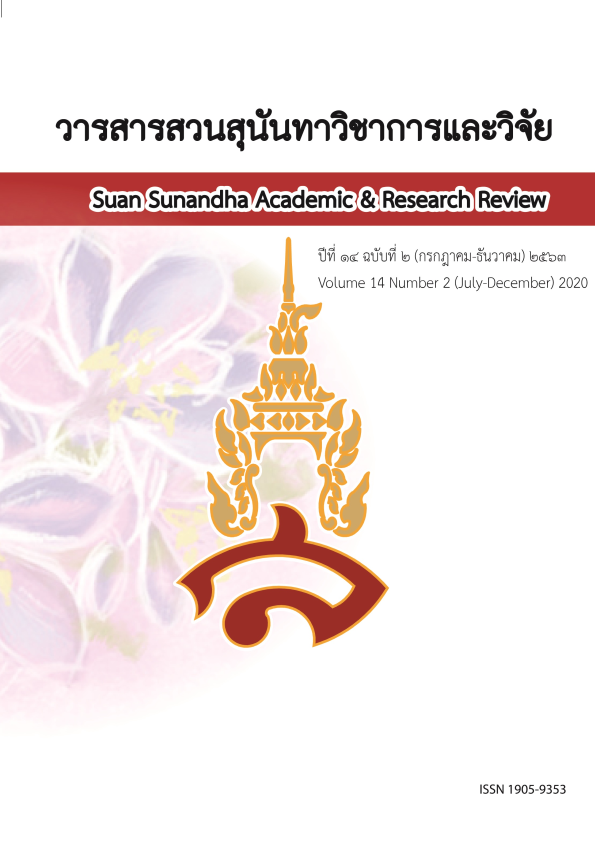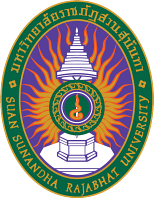การศึกษา “คุณลักษณะ” ของผู้หญิงล้านนาตามแนวคิดคุณลักษณศึกษา
คำสำคัญ:
คุณลักษณศึกษา, คุณลักษณะ, เจ้าดารารัศมี, พระราชชายา, ผู้หญิงล้านนาบทคัดย่อ
งานวิจัยนี้มีวัตถุประสงค์คือ 1) เพื่อศึกษาและรวบรวมข้อมูลด้านคุณสมบัติ คุณลักษณะเชิงคุณธรรมและจริยธรรมของผู้หญิงล้านนา และ 2) เพื่อศึกษาและวิเคราะห์ถึงกระบวนการขัดเกลาทางสังคมที่เสริมสร้างบุคลิกและอุปนิสัยติดตัวของผู้หญิงล้านนาภายใต้กรอบคิดของการศึกษาแบบคุณลักษณศึกษา การวิจัยนี้จึงเป็นการศึกษาชีวประวัติ บทบาทด้านต่าง ๆ รวมถึงบุคลิกและอุปนิสัยที่ดีงามของกรณีศึกษาคือเจ้าดารารัศมี พระราชชายา โดยใช้แนวคิดคุณลักษณศึกษาเป็นกรอบการวิเคราะห์และใช้วิธีการวิจัยเชิงคุณภาพและนำเสนอผลการศึกษาในเชิงพรรณนา รวมถึงใช้วิธีการเก็บรวบรวมข้อมูลแบบการวิจัยจากเอกสารเพื่อตรวจสอบและจัดหมวดหมู่แหล่งที่มาของทั้งเอกสารชั้นต้นและเอกสารชั้นรองที่เกี่ยวข้องกับเจ้าดารารัศมี พระราชชายา รวมถึงเอกสาร ตำราวิชาการและงานวิจัยอื่น ๆ ที่เกี่ยวข้อง จากนั้นจึงวิเคราะห์ข้อมูลโดยใช้วิธีการวิเคราะห์เนื้อหาทั้งหมด
ผลการศึกษาพบว่า
1) เจ้าดารารัศมี พระราชชายาเป็นผู้หญิงล้านนาที่มีคุณลักษณะสอดคล้องตามแนวคิดคุณลักษณศึกษาทุกประการและยังมีคุณลักษณะที่เป็นไปแนวคิด the six pillars of character ทฤษฎีภาวะผู้นำเชิงคุณลักษณะ และแนวคิดรูปแบบการพัฒนาคุณลักษณศึกษา
2) เจ้าดารารัศมี พระราชชายาเป็นผู้หญิงล้านนาต้นแบบที่เป็นแบบอย่างเพื่อเสริมสร้างคุณลักษณะด้านความเป็นผู้นำ ความน่าเชื่อถือ การเคารพ ความรับผิดชอบ ความเป็นธรรม การดูแล และการเป็นพลเมือง รวมถึงพฤติกรรมเชิงคุณธรรมและจริยธรรมซึ่งเป็นสิ่งสำคัญเพื่อพัฒนาผู้เรียนให้มีคุณลักษณะที่ดีในฐานะพลเมือง
เอกสารอ้างอิง
Bass, B. M. (1990). From Transactional to Transformational Leadership: Learning to Share the Vision. Organizational Dynamics 18(3), 19-31. Retrieved August 15, 2020 from http://dx.doi.org/10.1016/0090-2616(90)90061-S
Berkowitz, M. W., Bier, M. C. & McCauley, B. (2017). Toward a Science of Character Education: Frameworks for Identifying and Implementing Effective Practices. Journal of Character Education. 13(1), 33-51.
Berkowitz, M. W., Sherblom, S.A., Bier, M.C. & Battistich, V. (2006). Educating for Positive Youth Development. Handbook of Moral Development. New Jersey: Erlbaum.
Berkowitz, M. W. (2005). What Works in Character Education: A Research-driven Guide for Educators. Retrieved August 18, 2020 from http://c001af38d1d46a976912b99970780ce78ebdd694d83e551ef810.r48.cf1.rackcdn.com/orgheaders/2523/what%20works%20in%20character%20education.pdf
Character Counts. (2020). The Six Pillars of Character. Retrieved August 30, 2020 from https://charactercounts.org/program-overview/six-pillars/
Hauerwas, S. (1981). A Community of Character: Toward a Constructive Christian Social Ethic. Indiana: University of Notre Dame Press.
Josephson, M. J. (2002). Making Ethical Decisions. Los Angeles: Josephson Institute of Ethics. Kaewkiriya, R., M.R. (2010). Dara Rasmi: The Bond of Love Two Kingdoms. Bangkok: Chulalongkorn University Press.
Kanjanajari. N. (1990). Dara Rasmi: A Biography. Chiang Mai: Suriwong Book Centre.
Lickona, T. (1991). Educating for Character: How Our Schools Can Teach Respect and Responsibility. New York: Bantam Books.
Na Chiang Mai, W. (2004). Lanna Royal Women. Chiang Mai: Within Design.
National Archive of Thailand. (1927). R.7 M.2 8 / 6 Royal Secretary Document, King Rama VII, Ministry of Interior: Constructing the Royal Palace in Chiangmai (June 8-30, 1927).
Nucci, L., & Narvaez, D. (2008). Handbook on Moral and Character Education. New York: Routledge.
Potjanalawan, P. (2017). King Rama VII’s Chiang Mai Palace: An Unfinished Project and the Failure of Siamese Power in its Last Decade. Local Administration Journal. 10(1) (January-March), 1-17.
Ratana, P. (2020). The Studies of Southeast Asian Women in Historical Context. NRCT Official E-Journal Social Science Asia. 6(1) (January), 55-63.
Ratana, P. (2019). Modern Concepts and Principles of Education. Documentation for Teaching the Course 100110 Globalization and Education for Smart Citizenship. Chiang Mai: Faculty of Education, Chiang Mai University.
Ratana, P. (2009). Social Strategies in Creating Roles for Women in Lan Na and Lan Sang from the Thirteenth to the Nineteenth Centuries. (Doctoral dissertation). University of Muenster. Germany.
Ratana, P. (2000). Image of “Northern Women” from Late 25th to Early 26th Centuries (B.E.). (Master Thesis). Chiang Mai University. Thailand.
Sriwattanasarn, C. (2007). The Trace of King Rama VII on Visiting Northern Region and Payap Circle in 1926, (Research Report), King Prajadhipok Institute.
Summakasempat, A., Maneekul J. & Mangkhang, C. (2016). The Development of a Local Curriculum on Princess Dara Rasamee to Promote Dara Academy Identity for Secondary School Students, Dara Academy, Proceeding of the 6th STOU National Research Conference (pp. 1-12). Bangkok: Sukhothai Thammathirat Open University.
Suwanapichon, R. (2016). Princess Dara Rasmi: The Glory of Chiang Mai. Bangkok: Ban Mongkol.
Tantikun, N. (2005). Lanna In Time Dimension. Bangkok: The Knowledge Center.
Vivekananda, S. (2013). Education for character. Hyderabad: Ramakrishna Math.
Wongwanich, S. et al. (2006). An Accelerated Project for Building Good Character of Thai Children and Youth. (3rded.) Bangkok: Promotion and Development of Moral Ethics and Values (Moral Center) Office of Management and Development of Knowledge.
ดาวน์โหลด
รูปแบบการอ้างอิง
ฉบับ
ประเภทบทความ
สัญญาอนุญาต
บทความที่ได้รับการตีพิมพ์เป็นลิขสิทธิ์ของ สถาบันวิจัยและพัฒนา มหาวิทยาลัยราชภัฎสวนสุนันทา
ข้อความที่ปรากฏในบทความแต่ละเรื่องในวารสารวิชาการเล่มนี้เป็นความคิดเห็นส่วนตัวของผู้เขียนแต่ละท่านไม่เกี่ยวข้องกับมหาวิทยาลัยราชภัฎสวนสุนันทา และคณาจารย์ท่านอื่นๆในมหาวิทยาลัยฯ แต่อย่างใด ความรับผิดชอบองค์ประกอบทั้งหมดของบทความแต่ละเรื่องเป็นของผู้เขียนแต่ละท่าน หากมีความผิดพลาดใดๆ ผู้เขียนแต่ละท่านจะรับผิดชอบบทความของตนเองแต่ผู้เดียว






